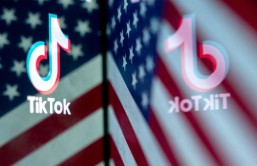The presence of sensors in smartphones continues to go, and IHS Technology claims that it won't slow down anytime soon.
The Douglas County, Colorado-based research firm shared its predictions for the smartphone and tablet sensor market Thursday, claiming that the market will triple from 2012 through 2018, and that sensor sales will increase to $6.5 billion in four years, according to Investors.com. Sales were $2.3 billion in 2012 and $3.5 billion in 2013.
IHS says the use of sensors in phones is growing because of competition between Apple and Samsung, two top contenders in the smartphone industry that are developing sensors involving sound, motion and touchscreen control. Apple put 10 sensors in its iPhone 6, which include three microphones, a six-axis combo motion sensor that uses an accelerometer and a gyroscope, a discrete accelerometer, a pressure sensor, a proximity sensor, an ambient light sensor and a fingerprint sensor. Samsung's Galaxy S5 comes with 11 sensors, among them being an optical pulse sensor.
The company added that new sensors will be responsible for the growth of the sensor market, Investors.com reported. These sensors will include those that measure temperature, humidity and air pollution, as well as those that involve gas, ultraviolet-light and thermal imaging.
Samsung was mentioned in the report to have included a variety of environmental and health sensors in its more well-known devices over the past 18 months, such as a humidity sensor in the Galaxy S4, a pulse sensor in the S5 and a UV sensor in the Note 4.
The amount of sensors in a phone is also expected to grow, with Jeremie Bouchaud, analyst at IHS, saying the number of sensors in a phone will rise from 10 now to 13 or 14 in the next four years, Investors.com reported.
IHS also predicted that China will experience an increase in the amount of sensors that measure the quality of air, adding that smartphone users in Beijing, Shanghai and other major cities in the country are demanding for sensors for finding particle pollution.








